
Ronald R. Cherry
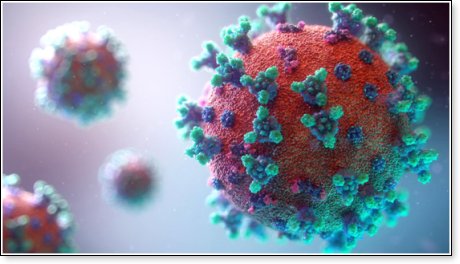
Updated February 7, 2022
It is important for truthful scientific information regarding messenger RNA (m-RNA) COVID-19 vaccines, both Pfizer and Moderna, to become widely understood by Americans. During clinical studies – according to the CDC – m-RNA vaccines for COVID-19 were 80% effective starting 7 days after the first injection, and 95% effective starting 7 days after the second injection. A Jerusalem Post article dated February 20, 2021, reported that the Israeli Health Ministry has observed Pfizer’s coronavirus vaccine to be 99% effective in preventing hospitalization, serious disease and death for those who are past two weeks from the second dose. m-RNA coronavirus vaccines are extremely effective in the real world a week after the second dose, just as demonstrated in clinical studies. A May 21,2021 study observed 94.5% & 94.2% effectiveness, respectively, of Moderna & Pfizer vaccines against developing any COVID-19 related disease, and 100% & 92% effectiveness, respectively, for Moderna & Pfizer vaccines against developing severe disease. Other studies observed m-RNA vaccines to have strong effectiveness against the Brazilian, British and Delta variants of SARS-CoV-2, and “lower…but very impressive” effectiveness against the South African variant. During the recent Omicron surge, according to the CDC, unvaccinated people were 6.4 x more likely to be hospitalized with COVID-19 compared to those with boosted vaccination, and 2.7 x more likely compared to vaccination without booster.
Pain at the injection site is common; low grade fever, fatigue, muscle aches or headaches may occur, usually on day 2 or 3 and usually lasting about 1 day. There were no deaths from these m-RNA vaccines during clinical trials involving 40,000 people. A March 8, 2021 study observed a 2% risk of allergic reaction from m-RNA vaccines, and a 0.025% (1 in 4,000) risk of anaphylaxis – 94% of whom were women. Average time to anaphylaxis was 17 minutes after vaccination; 6% of these anaphylaxis cases required treatment in an ICU (0.0015% of all vaccinated = 1 in 65,000); all recovered from anaphylaxis with no deaths, thus professional medical treatment for severe reactions has been very effective. Cases of myocarditis and pericarditis have occurred after m-RNA vaccination, mostly in male adolescents and young adults, usually a few days after the second injection. A September 08, 2021 study observed that the risk of myocarditis in boys aged 12-15 was about 5x higher than their risk of COVID-19 hospitalization. Out of 2.8 million immunized with an m-RNA COVID-19 vaccine, 23 cases of myocarditis were observed in U.S. Military members within 4 days of the second injection, average age of 25. All cases resolved with supportive care. The risk of myocarditis or pericarditis in adolescents and young adults should be balanced against their small risk from COVID-19 illness, and first discussed with their primary care physician or provider before receiving vaccination.
Regarding COVID-19 vaccine safety the CDC states:
“Reports of death after COVID-19 vaccination are rare. FDA requires healthcare providers to report any death after COVID-19 vaccination to the Vaccine Adverse Event Reporting System (VAERS), even if it’s unclear whether the vaccine was the cause. Reports of adverse events to VAERS following vaccination, including deaths, do not necessarily mean that a vaccine caused a health problem. More than 539 million doses of COVID-19 vaccines were administered in the United States from December 14, 2020, through January 31, 2022. During this time, VAERS received 11,879 preliminary reports of death (0.0022%) among people who received a COVID-19 vaccine. CDC clinicians review reports of death to VAERS including death certificates, autopsy, and medical records. A review of reports indicates a causal relationship between Johnson & Johnson’s Janssen [DNA] COVID-19 vaccine and [
Otherwise, rare deaths which have occurred soon after m-RNA vaccines may well have been due to other causes. Balance this tiny and acceptable m-RNA vaccine risk against the American COVID-19 1.2% case fatality rate, and over 900,000 COVID-19 related deaths in the United States, death risk which is much higher in the elderly and those with co-morbid conditions such as diabetes, hypertension, obesity, immunosuppression, or underlying heart, lung or kidney disease, and balanced against the overall American COVID-19 mortality rate of 275 deaths per 100,000 (179 in 65,000), and against 17% mortality in those hospitalized with COVID-19 (11,050 in 65,000), 11.5% mortality for those admitted to a regular hospital ward, and 40.5% mortality in the critically ill (26,325 in 65,000). COVID-19 is 3x more deadly than influenza in hospitalized adults, and 10x more deadly than influenza in hospitalized adolescents.
U.S. health authorities have observed an increase in breakthrough cases with the Omicron variant compared with prior versions of COVID-19 illness, however, as expected, the rate of infection remains far greater among the unvaccinated:
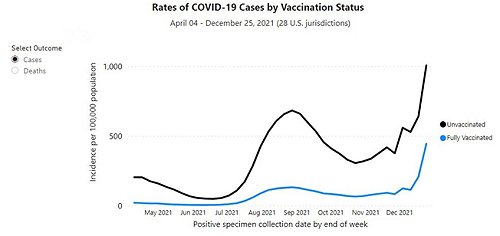
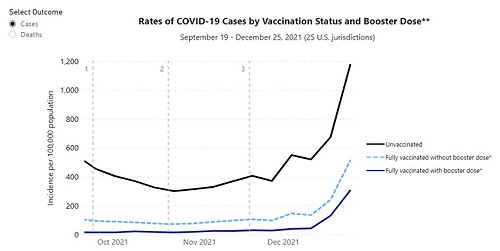
As with the Delta surge, death from the Omicron variant is very unlikely among the vaccinated:
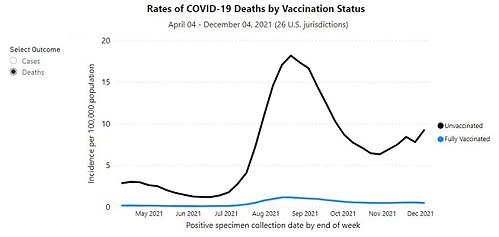
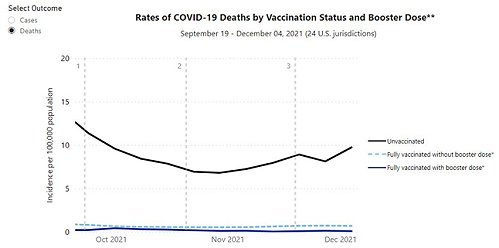
It is believed by most vaccine authorities that, in pregnant women and their fetuses, the risk of harm from COVID-19 illness is greater than the risk of m-RNA vaccine. The CDC and Mayo Clinic note that pregnant women who have COVID-19 appear more likely to develop severe respiratory disease requiring ICU care and are more likely to be placed on a ventilator. Some research suggests that pregnant women with COVID-19 are also more likely to have a premature birth and cesarean delivery, and their babies are more likely to be admitted to a neonatal unit. Pregnant women and those of childbearing potential should discuss this issue with their OB-GYN physician. There is no scientific evidence that these m-RNA vaccines can cause infertility. People with a history of anaphylaxis to prior vaccines, and those with known allergic reactions to polyethylene glycol or polysorbate 80, should consult with a Board-Certified Allergist before receiving any vaccine. People who experience an allergic reaction within the first 30 minutes after receiving the first dose of an mRNA COVID-19 vaccine should not receive the second dose.
m-RNA vaccines are only active in a person's cell cytoplasm where they attach to ribosomes in the process of producing SARS-CoV-2 spike proteins (not the virus its self), thereby inducing natural immunity against the Coronavirus. These vaccines do not enter the cell nucleus and have no biologic power to affect our genetic code or inheritance. These m-RNA vaccines do not empower others to track your position or movements – a truly wild and scientifically uninformed conspiracy theory. These m-RNA vaccines do not contain mercury. These m-RNA vaccines are not produced using animal cells or tissue. These m-RNA vaccines are not produced using fetal cells or tissue, aborted or otherwise. These m-RNA vaccines will not cause you to become positive for SARS-CoV-2 by nasal swab RNA testing.
Vaccination is often recommended about 3 or 4 months after recovery for those who have suffered from COVID-19 illness, providing lasting immunity even against current SARS-CoV-2 variants. m-RNA vaccination for survivors of COVID-19 illness significantly boosts immunity against SARS-CoV-2:
“Twelve-months after infection, the geometric mean half-maximal [antibody] neutralizing titer (NT50) for the 37 [recovered] individuals that had not been vaccinated was 75, which was not significantly different from the same individuals at 6.2 months. In contrast, the vaccinated [recovered] individuals showed a geometric mean NT50 of 3,684, which was nearly 50-fold greater than unvaccinated individuals.”
Many survivors of COVID-19 will desire the additional immunity which derives from convalescent (post-infection) vaccination. The CDC recommends a two injection regimen spaced three or four weeks apart, followed by a booster 5 months later; February 01, 2021 research indicated that survivors of COVID-19 develop adequate immunity after only one m-RNA injection. An Israeli study found that natural immunity after surviving COVID was 13x more protective against breakthrough than m-RNA vaccination, but not better in preventing critical illness and death; however, over 900,000 Americans have died from COVID-19 waiting for natural immunity which didn’t show up in time. Relatively few vaccine breakthrough COVID-19 cases were being reported during pre-Omicron surges, and such cases were milder and shorter-lived than that occurring in the unvaccinated. The silver lining of breakthrough COVID-19 is improved immunity thereafter, as noted in a September 03, 2021 report:
“They evaluated reports from people who had been given at least one dose of Pfizer-BioNTech, Moderna, or AstraZeneca mRNA COVID-19 vaccine between December 2020 and July 2021. Researchers included a control group of unvaccinated people for comparison. According to the findings of 971,504 fully vaccinated people, only 0.2 percent went on to develop a breakthrough infection. When this data was compared with reports from unvaccinated people who got COVID-19, it was found that breakthrough cases were associated with a 49 percent lower risk of symptoms lasting 4 weeks or more after infection.”
I was vaccinated with one of the COVID-19 m-RNA vaccines in the standard two injection regimen, experiencing arm soreness at the injection site with both, and some fatigue and body aches after the second injection and after the booster. Booster injections are recommended since vaccine antibody immunity decreases over time, thus boosted vaccine immunity decreases the probability of COVID-19 infection, hospitalization and death. One must consider the possibility that future SARS-CoV-2 mutations will have the power to defeat current natural and vaccine immunity, as we have seen with the Omicron variant, but future mutations may be more virulent (dangerous) than Omicron, so the best strategy is to continue with periodic genetically updated m-RNA vaccination which can defeat future SARS-CoV-2 mutations.
I am witness to the incredible destructiveness to human organs in patients who develop critical COVID-19 illness, thus I fear the disease and not these wonderful vaccines, which by July 2021 were estimated to have saved almost 300,000 American lives, and can save many more. I have observed only one fully m-RNA vaccinated COVID-19 ICU admission at my hospital; almost all of our hospital and ICU admissions are unvaccinated, a nationwide trend. Vaccine breakthrough cases in the United States accounted for only 0.9% of COVID-19 deaths in mid to late 2021, while 99.1% of deaths occurred among the unvaccinated.
Ronald R. Cherry, MD
Board Certified Pulmonologist
© Ronald R. CherryThe views expressed by RenewAmerica columnists are their own and do not necessarily reflect the position of RenewAmerica or its affiliates.


















